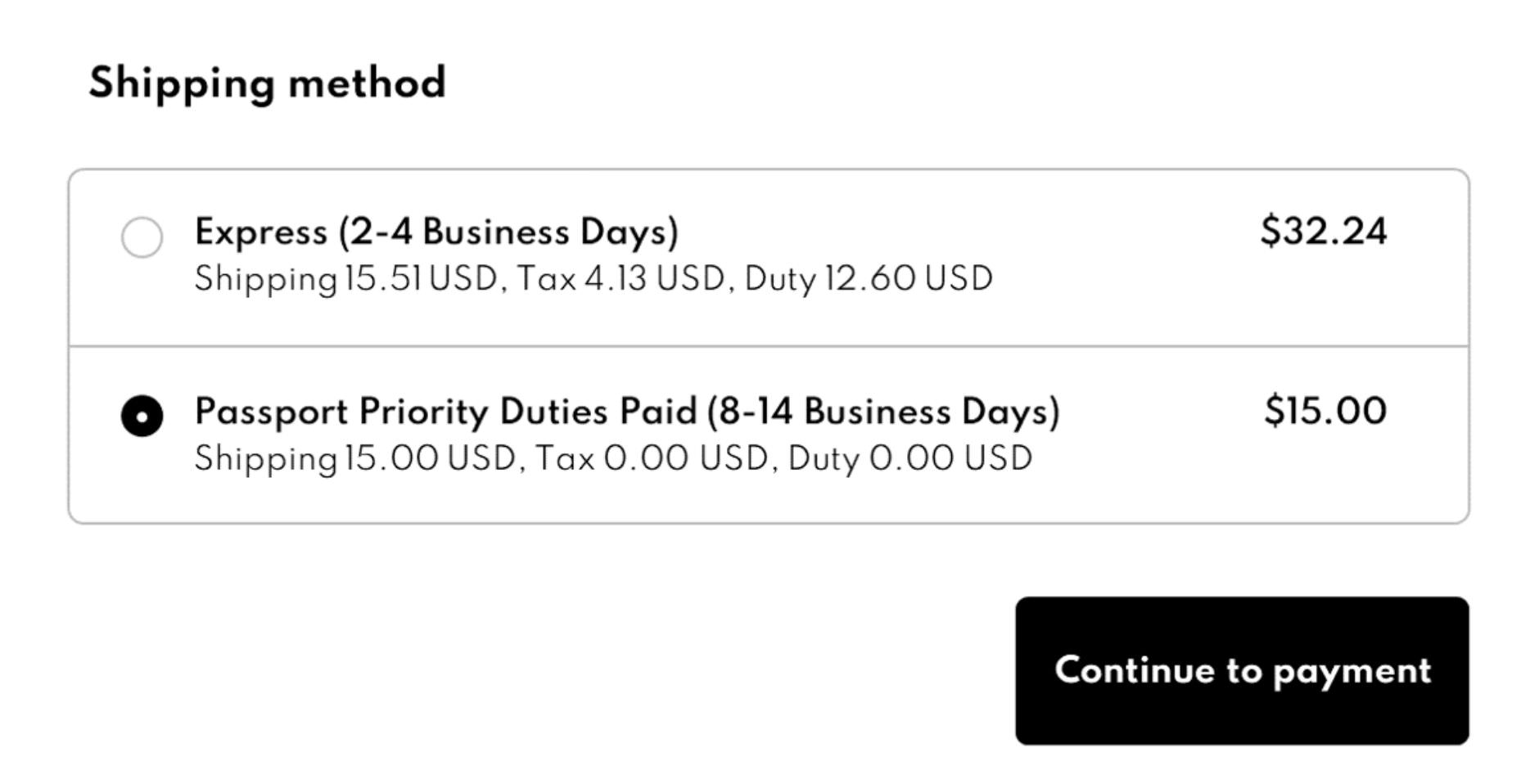
Yanqiang Tan leads Data Science at Passport Shipping, an international shipping carrier focused on small parcel shipping for Direct to Consumer e-commerce companies.
Shipping is the final hurdle of a customer’s cart experience. The cost and timing of your shipping options are often what stand between a customer making a purchase or walking away.
While international shipping is generally a little less straightforward than domestic shipping, figuring out the complexities shouldn’t prevent you from pursuing an effective international shipping strategy that supports your primary business objectives.
Customer Experience Matters
One of the first considerations when developing a pricing strategy for international shipping is to decide whether to ship Delivered Duty Unpaid (DDU), Delivered Duty Paid (DDP) or both. Each has its pros and cons and can make a big impact on your customer’s experience.
Delivered Duty Unpaid (DDU): When shipping DDU, a customer pays only for shipping at checkout. If the shipment is subsequently assessed for duties and/or taxes, the customer will have to pay for these customs fees before their shipment can be collected. If there is any delay in paying the customs fees, shipments may be held up at customs until the customer completes the payment.
Delivered Duty Paid (DDP): DDP shipping requires that a customer pay for shipping as well as applicable duties and/or taxes at checkout. While costs incurred upfront may at times be higher, DDP shipping ensures a seamless delivery direct to your customers’ doorstep (i.e. packages are not held at customs).
There is no hard and fast rule when it comes to choosing between DDU and DDP shipping (e.g., DDU shipping isn’t always cheaper than DDP shipping). It really depends on factors such as the product you sell, the value of those products and the customer experience you wish to provide. Working with a knowledgeable shipping partner will help you evaluate each service and select a shipping mix that best supports your business objectives. For instance, you might choose DDU shipping if you happen to sell relatively low value products.
Pricing Strategy Options
Once you’ve decided on your service levels, you’ll need to consider what type of pricing strategy to implement.
Live Rates
These are real-time shipping rates that are based on the destination country and the weight of the shipment. Charging live rates allows you to easily pass through shipping costs by charging the customer what you are being charged by your carrier to ship the order.
Flat Rates
Flat rates offer brands greater flexibility around how they wish to present shipping costs to customers. When offering a flat shipping rate, brands have the option of including the cost of duties and taxes.
- Flat shipping rate with separate live duties and taxes, or
- Flat shipping rate with duties and taxes included in the flat rate
It is important to note that offering a flat rate doesn’t mean offering a single rate for all shipments. Flat rates can be tiered along a variety of parameters – order value, weight, geographic region, etc. When selecting an international carrier, look for one (such as Passport) that provides the flexibility to configure and test different flat rate options.
Free Shipping
Offering free shipping is an obvious way to reduce cart abandonment and increase conversions. However, since shipping costs can vary significantly by destination country and weight, consider if you want to offer free shipping on all orders or only on those above a certain value.
Express Shipping
While express shipping is primarily used to provide an expedited option to customers who are willing to pay for it, it can serve as a useful tool in your pricing arsenal when offered together with economy shipping options. The relative price difference, which can be significant, instantly makes your economy shipping options more palatable to customers.

Determine Key Objectives
For some brands, selecting one of the above pricing strategies might suffice. For others, a combination of two or more might be required. Regardless of what you ultimately select, it is important to first consider your primary business objectives before selecting the appropriate pricing strategy that will support them.
If you’re like most brands, you’re probably faced with one of the following challenges.
- Increasing conversion
- Increasing average order value
- Expanding into a new market
- Improving customer experience
For instance, if you’re trying to increase conversion and your customers have a preference for low cost options, you may want to offer free shipping. Alternatively, if your goal is to increase average order value, consider combining flat rate shipping with free shipping above a certain cart value to encourage customers to add more items to cart before checking out. Once you’ve determined what you’re trying to solve for, selecting the right pricing strategy becomes relatively straightforward.
Whether you’re brand new to international shipping or already have an international customer base, don’t let international shipping and the lack of an effective pricing strategy be a barrier to international growth.
About Passport Shipping
Work with a trusted partner such as Passport to discover how you can leverage an effective pricing strategy that is tailored for your business to grow your international business. Passport is a modern international shipping carrier that provides an end-to-end international shipping solution for hundreds of direct- to- consumer brands, including in-cart pricing strategies that are tailored for product, order value and desired customer experience.
Tags: International






